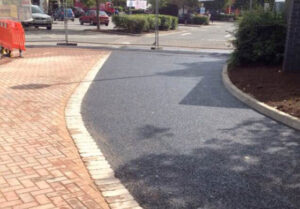Every country or civilization needs roads as they are the key structures that unite people, goods, and ideas across very long distances. Even though today’s highways and paved streets can hardly be called ancient, the history of road building goes much further back in time. As the centuries rolled, roads’ design manifested the increasing demand of people for transit, trade, or interaction.
The Early Days: Ancient Roads and Pathways
Originally, there was really little more than dirt tracks; simple formations arising from migration of people, animals and wheeled traffic. These paths were essential for societal movement, commerce and even in conquest. Despite their simplicity they provided the basis of which formal routes would eventually be developed once human settlements became a little more sophisticated.
a. Mesopotamia and Egypt
Historically the initial roads developed in the Mesopotamia about 4000 B.C as trading and settlers’ paths for movement of goods from one city to another. Although these early roads were not paved but made of compacted earth the travel during the wet seasons was very hard.
Likewise ancient Egypt established roads mainly for the carriage of materials such as stone that was required for construction of their large structures. These roads were of stone block or packed mud and enabled the building of structures such as the pyramids, due to efficient transportation of large stone blocks.
b. The Roman Road Network
Most recognizable of them all are the Romans who constructed one of the most intricate ancient road networks in the science of ancient civilizations. Roman road constructions were spectacular, with the aim and purpose of being a link between two distant regions of Rome. They were made with sub-base of stones, gravel, sand with top dressed with large interlocking stones.
The Romans built over 400,000 kilometers (250,000 miles) of roads, with many still visible or in use today. Roads like the Via Appia allowed for the rapid movement of armies, trade, and communication, solidifying Roman control over vast territories.
Medieval and Renaissance Road Construction
The Roman’s ceased constructing roads in Europe after their empire crumbled. Some of the Roman roads started dilapidating as regional authorities could no longer afford necessary repairs to them. Nevertheless, trade, pilgrimage, and communication needed roads in the middle age to continue flowing.
a. Pilgrimage Routes
In the course of medieval ages, the contacts that play a significant role in religion for travelers such as the Camino de Santiago in Spain are important. These roads wre no highways but these roads ran between large religious cities and helped in the exchange of culture from one region to another.
b. Renaissance Rebirth
The new construction of roads was more fashionable during the Renaissance period more especially in Italy and France. The ever advancing council of commerce and trade prompted cities to seek better roads for economic development. Cobbled roads were laid in the cities and Kings like Louis the XIV of France started to build roads to better integrate their kingdoms.
The Industrial Revolution: Introduction of Modern Roads
The latter was made possible by advances in the Industrial Revolution, where new demands for transportation called for sturdier and far better roads. As industry and mass production developed it produced urbanization or the need to transport products and goods from factories to the ports and markets.
a. The Macadam Road
In the early part of the nineteenth century the Macadam road by John Loudon McAdam, a Scottish engineer, could be listed as an important innovation. Macadam roads were roads whose surfaces were built using crushed stone which was compacted in several layers to ensure it was strong enough to accommodate carriages and wagons. This technique was innovation during the construction of roads because it enable the roads dip to drain water hence preventing them to be destroy by rain or by wear.
b. The Invention of Asphalt
The arrival of the twentieth century marked two more advancements; one was the creation of asphalt roads during the late 1880. Asphalt a combination of bitumen and aggregate provided a better and smoother surface than cobblestone or gravel. Asphalt paving introduced in the United States in 1870 in Newark New Jersey indicated a new direction on roadway construction.
Asphalt roads will be especially popular when the range of automobiles appeared in the beginning of the twentieth century; asphalt roads will become the standard for modern roads.
20th Century: The Birth of Modern Highways
There was a transport revolution in the twentieth century with the REQUIRED automobile as the most popular means of individual and business transport. Motor vehicles – cars and trucks – were changing the transportation system for people and goods, and the speed and reliability of road and street infrastructure became pressing.
a. The Development of Highways
With the emergence of motor vehicles, countries of the world started to embark on construction of mass road infrastructure. One of the largest projects was the US Interstate Highway System which construction was initiated by the President Dwight D. Eisenhower in 1956. Designed to resemble German’s Autobahn, Interstate system was intended for national defense, commerce, and individual transport.
The American Interstate Highway System has expanded further than 48,000 miles of highway that connect the various areas of the U.S, and it influenced the economic and transport backbone for this nation.
b. Advances in Construction Techniques
The 20th century also brought knowledge of better construction materials and methods in to the field. The use of concrete and steel in construction; introduction of heavy mechanical equipment, including bulldozers, asphalt pavers, graders, and compactors. Also, the materials that were used in construction of roads were enhanced through the use of layout of reinforced concrete and the available new types of asphalt led to increased durability of roads hence, less repairs.
21st Century: Smart Roads and Sustainable Infrastructures
As the world shifted on the cusp of the twenty first century construction of roads were again transformed through the dynamics of change and technological breakthrough. Contemporary roads are not merely routes—they are reproductions that are also gradually accommodating technology-enhanced urban ecosystems, self-driving cars, and environmental standards.
a. Smart Roads
Smart road is one of the most evolving technologies in the construction of roads today. Besides, these roads are installed with sensors, solar panels and communication systems that include ability to interface with the car, manage traffic information and in certain systems generate power. Lessons learned from smart roads include increased ability to effectively regulate traffic and decrease the rate of accidents together with the capability to successfully integrate autonomous cars into a transportation infrastructure.
b. Sustainable Road Construction
It is now widely accepted that sustainability constitutes one of the main goals of road construction. Professionals are using recycled materials including recycled asphalt, recycles concrete in performing green engineering inclusive of green construction. Also, there has been increased use of courses that include some level of porosity through which rainwater may pass through to help in one way reduce flooding particularly in urban areas.
Yet, there appears a shift towards low energy equipment and the use of local materials in the construction of roads in a bid to reducing on carbon impacts on the environment.
Conclusion
It is therefore appropriate to say that this change represents some of the most dynamic features of human existence and construction of roads is no exception. Beginning from the old Roman civilization that featured complex networks of pathways that bound the empire and going by the current advanced transport infrastructure that holds the economic global network together, one can argue that this infrastructural invention was among the necessities that helped society forward. Worthy of mention is that trends of the future are smart technologies combined with elements of sustainable construction, which means that the next stage in the development of road construction can significantly improve the quality of transport systems.
We have traveled a long way from the cattle tracks leading to Roman cities and other early cultures; and we’ll continue to travel this road as we adapt to the situations and possibilities for the twenty-first century.












